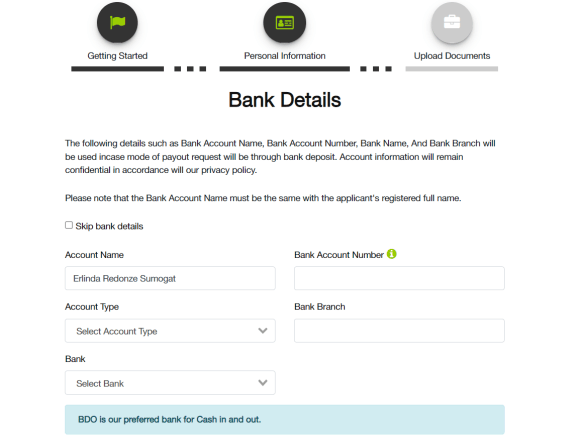Are you interested in the world of stock market investing in the Philippines?
Whether you’re looking to invest in blue-chip stocks or trade in the stock market. Philstock is a trusted and reputable online trading platform that offers a seamless and user-friendly experience for investors of all levels.
We’ll help you how to open a stock market account and start your journey as an investor.

How to Open Philstock Account
- Go to Philstock registration page.

2. Check and prepare your requirements.
- a. Email address and phone number for verification
- b. A copy of at least two (2) valid IDs
- c. A clear photo of yourself while holding your valid ID.
3. Read and agree to the Terms and Conditions.

4. Select which type of account you would like to open with: Individual Account or Joint Account.

5. Get your reference number and wait for an SMS or Email Notification.

6. Fill out the online registration form:
Contact Information

Source of Income

Investment Profile

Bank Details

7. Upload your Valid ID and take a selfie for verification.
- You will need to upload a clear copy of your valid ID and a “selfie” to verify your identity.
- Take a photo of the front and back portion.
- Capture the image from above, with your ID on a flat surface. Ensure all four corners of your ID are showing.
- Upload a blank paper with one (1) specimen signature for signature
verification.



Please see the document/s required below for your reference:
List of Primary ID that are accepted by Philstock
- Philippine Passport
- Philippine Driver’s
- License
- Professional Regulatory Commission (PRC) Card
- Postal ID
- Armed Forces of the Philippines ID
- Social Security System
List of Secondary ID that are accepted by Philstock
- Overseas Filipino Worker ID
- OWWA ID
- Seaman’s Book
- Senior Citizen Card
- Voter’s ID
- Company Employment ID
- PAGIBIG ID
8. Fund your account as a requirement to activate it.
By opening a Philstock account, you gain access to a reputable and trusted brokerage firm that offers a user-friendly platform, a variety of investment products, and valuable research tools to help you make informed investment decisions.
Remember to conduct thorough research, seek professional advice if needed, and make informed investment decisions based on your financial goals and risk tolerance.














